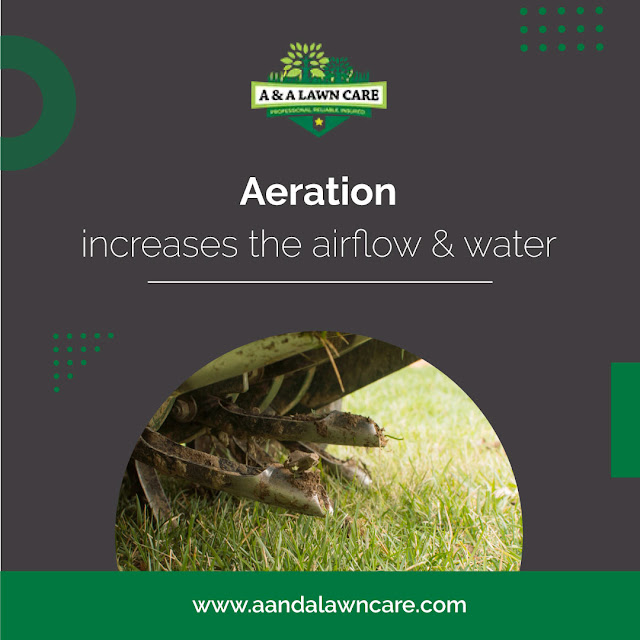Revive and Thrive: Aeration and Top Dressing Techniques for a Vibrant Lawn
A lush and vibrant lawn can elevate the aesthetics of any outdoor space, providing a green oasis for relaxation and recreation. However, over time, soil compaction and thatch buildup can hinder grass growth and steal your lawn of its vitality. To breathe new life into your lawn and help it thrive, aeration and top dressing are essential maintenance practices. These are 5 techniques and how they can rejuvenate your lawn, resulting in a healthier and more vibrant outdoor environment.
1. Understanding Aeration:
It is the process of puncturing the soil with small gaps to relieve
compaction and improve air circulation, water absorption, and nutrient uptake.
Yards that endure heavy foot traffic or are subjected to regular use can become
compressed, leading to root suffocation and poor grass growth. Aeration helps
counteract this problem by creating channels that allow oxygen, water, and
nutrients to penetrate the root zone.
2. When to Aerate:
For cool-season grasses like Kentucky bluegrass and fescue, early fall
or early spring is ideal. This timing ensures that the grass can recover and
grow vigorously during the favorable growing seasons. Warm-season grasses like
Bermuda grass or Zoysia benefit from aeration during late spring or early
summer when they are actively growing.
3. Core Aeration Technique:
Core aeration, also known as plug aeration, involves the use of
specialized equipment to remove small plugs of soil from the lawn. These cores
are left on the surface to break down naturally, adding beneficial organic matter
to the soil. The holes created by core aeration should be spaced approximately
2 to 6 inches apart, depending on the severity of soil compaction.
4. Top Dressing for Improved
Soil Structure:
Top dressing complements aeration by adding a thin layer of organic
matter and soil mix to the lawn's surface. This practice helps enhance soil
structure, promotes microbial activity, and encourages root development. It
also evens out minor lawn imperfections and levels low spots, creating a more
uniform surface.
5. Selecting the Right Top
Dressing Material:
When choosing a top dressing material, opt for a balanced mix of sand,
compost, and soil. The sand aids in improving drainage and preventing
compaction, while compost adds valuable nutrients to the soil. Mixing in some
native soil also helps with the assimilation of the top dressing into the
existing lawn.
7. Benefits of Aeration and
Top Dressing:
1. Enhanced Oxygen and Nutrient Flow:
Aeration opens up the soil, ensuring that oxygen, water, and nutrients
can reach the grassroots, fostering robust growth.
2. Improved Drainage:
Compacted soil can lead to waterlogging and drainage issues. Aeration
helps water permeate the soil, reducing the risk of standing water and its
associated problems.
3. Thatch Reduction:
Thatch, a dense layer of dead grass and roots, can accumulate on the
soil surface and inhibit water and nutrient absorption. Aeration helps break
down thatch, promoting a healthier lawn.
Aeration and top dressing are vital techniques for reviving and
maintaining a vibrant lawn. Whether your lawn endures heavy traffic or simply
needs some rejuvenation, incorporating aeration and top dressing into your lawn
care regimen will reward you with a lush, green expanse that you can enjoy for
years to come. To know more visit https://aandalawncare.com/ today!





Comments
Post a Comment